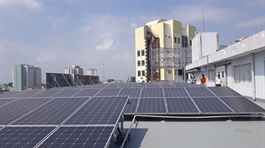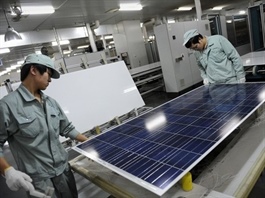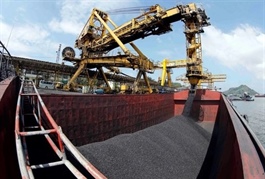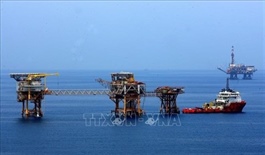Untapped potential for Việt Nam to build international transshipment ports
Untapped potential for Việt Nam to build international transshipment ports
Việt Nam had a lot of potential to establish international transshipment ports to meet global demand for transshipped container goods, industry insiders have said.

The Cái Mép-Thị Vải complex in Bà Rịa-Vũng Tàu Province has been chosen to become an international transshipment port as it is one of the 23 facilities worldwide capable of handling vessels with deadweight tonnage (DWT) of up to 250,000. — VNA/VNS Photo Ngọc Sơn |
Phạm Anh Tuấn, general director of Portcoast Consultant Corporation, said the proportion of transshipped container goods through the Asia-Pacific region saw an average annual growth of over 5 per cent over the past 40 years. From 2013, the rate slowed down to about 3.2 per cent.
Of the 60 per cent of container goods transported through the East Sea, about 30 per cent had been transshipped. That meant, for every 100 global containers, 30 transshipment containers passed through this area, he told baogiaothong.vn.
It was forecast that about 12.8 million TEU of container goods would be transshipped via ports in the East Sea by 2030, Tuấn said, adding that if given the opportunity, Việt Nam could participate and meet part of the demand.
However, Tuấn said, the transshipment sector is mainly dominated by shipping companies which have been establishing routes and collecting and distributing containers on their transport routes. The participation of the world's top shipping lines was vital for an international transshipment port in addition to natural factors.
Besides foreign shipping firms, the capacities of Vietnamese partners were also important, he told the online newspaper.
According to Ngô Khắc Lễ, a logistics expert, it took time for Việt Nam to gradually develop an international transshipment port as many others in the region were far more known on a global scale.
Hồ Thị Thu Hòa, director of the Vietnam Logistics Research and Development Institute, said many factors were needed if Việt Nam wanted to have an international transshipment port that operates effectively and attracts shipping lines.
Hòa said that transshipment ports in Việt Nam should be located in highly commercial locations. From there, shipping lines could set up transit stations to Asian routes or further afield. These ports should also have advantages in terms of cost and time and offer new and more convenient services to attract shipping firms.
Statistics from the Vietnam Seaport Association showed that in recent times, the growth rate of global maritime transport stood at 5-10 per cent each year. In 2020, global container transport output reached 816 million TEU. The volume was expected to reach about 978 million TEU by 2025.
Notably, the proportion of transshipped container goods would likely make up between 28 per cent and 30 per cent of the total volume of global container transport, equivalent to 274-293 million TEUs by 2025. Ports in Southeast Asia would account for about 30 per cent of the transshipment volume, equivalent to 82-88 million TEUs by 2025.
In Việt Nam, the Cái Mép-Thị Vải complex in Bà Rịa-Vũng Tàu Province has been chosen to become an international transshipment port as it is one of the 23 facilities worldwide capable of handling vessels with deadweight tonnage (DWT) of up to 250,000.
The complex accounts for over 16 per cent of the total cargo throughput at seaports across the country, 35 per cent of the container cargo volume nationwide, and 50 per cent of the container cargo volume in the South.
The Ministry of Transport (MoT) said it will consider suitable policies to develop international transshipment ports in Vân Phong of the central province of Khánh Hòa.
The ministry has also agreed with the HCM City People's Committee on the need to set up a research project to build Cần Giờ international transshipment port and carefully evaluate the impacts.
The Cần Giờ international container transshipment port project with a total investment of about US$6 billion is being studied by the Vietnam Maritime Corporation (VIMC) and the Mediterranean Shipping Company.























